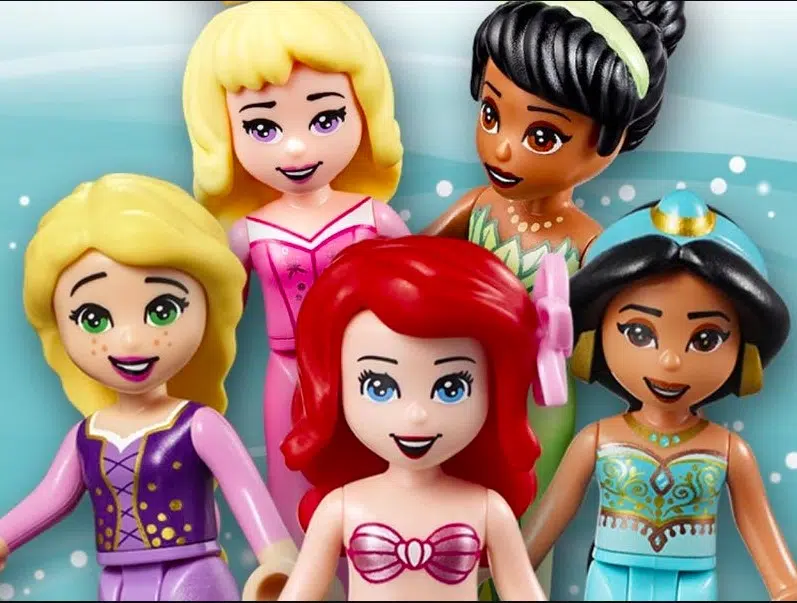
by Stephanie Taylor
In the first half of our Disney Princess analysis, we looked at Disney Princess sets. We conclude the analysis by taking a closer look at characters in these sets and how they’ve been portrayed in minidoll form.
After looking at the sets themselves, the second category of information we collected were the characters from these Princess sets. We focused primarily on minidolls that represented the Princesses themselves, as they were the majority and the most important group for us to analyze in these sets. For all female characters included in the Princess subtheme, we looked at ethnicity, amount of skin-tone on torso (none to severe), average price, the number of sets in which exact character was found, and other categories of importance. Since none of these minidolls were released on their own (without an accompanying set), LEGO has no official price for any of them. However, Bricklink, as a marketplace, has the average price that any particular minidoll has sold for in the last six months, so this was the price we used in our calculations. For this analysis, we used a time period over the summer of 2020. Again, we included all iterations of Anna and Elsa in this analysis.
Characters Results
Aside from sets, we also analyzed every female character included in all the Disney Princess subtheme. In total, there were 51 characters, all in the minidoll style. In many cases, the same character has different variations – for example, there is an “Aurora – Open Mouth with Roses on Dress”, an “Aurora – Open Mouth”, and, an “Aurora – Closed Mouth”. In some cases, just the facial features change, while in other cases, the same character is shown wearing different outfits. We have termed these “variations” and, in the case of Aurora, there would be 3 “variations” on the same character. Sometimes, the same character in the same outfit with the same facial expressions will be used in more than one set, as is the case for “Moana – Tan Skirt”, who is used in two sets. To get the total uses of a single character, we took the total variations plus the number of times each variation was used – “Moana- Tan Skirt”, for example, counted twice but “Aurora – Closed Mouth” only counted once. Then we compiled every character into the graph below.
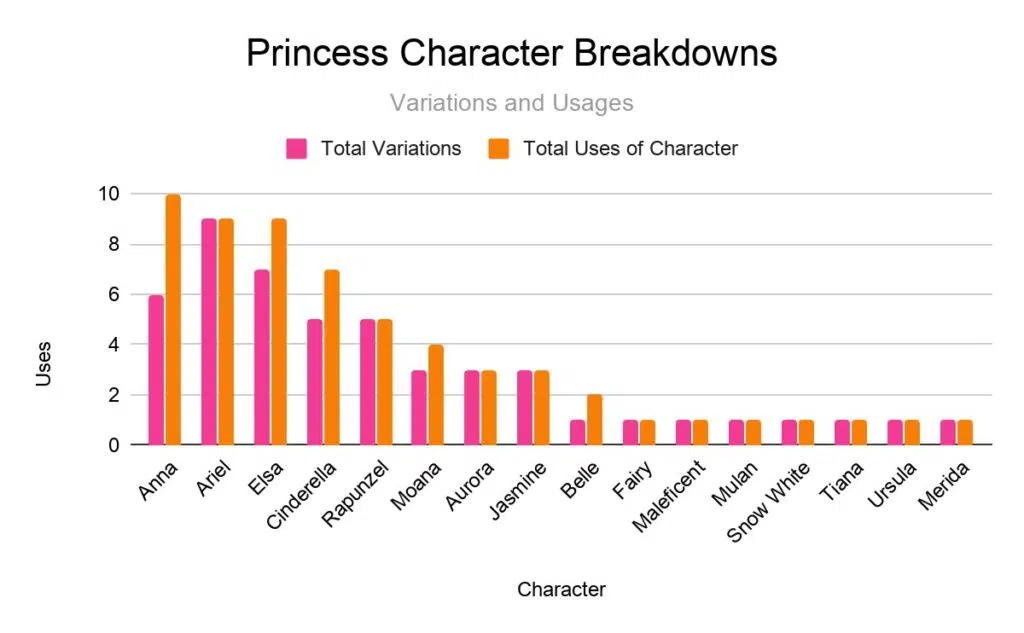
As you can see, Anna, Ariel, and Elsa are the three most used princesses both in variations and in total uses of character. Anna and Elsa make a fair amount of sense, as they are the most popular in the Disneyverse, however Ariel seems a bit odd. The Little Mermaid made significantly less than many other popular Princess movies, including Moana and Princess and the Frog. And yet, both Tiana and Moana have significantly fewer iterations than Ariel. In an even more peculiar twist, although Ariel spends most of her movie in human form, LEGO has released no less than 6 nearly identical versions of her mermaid self. One could argue that the lack of representation of LEGO princesses of color is due to some underlying racism within the company, but I can provide no explanation for the excess of mermaid Ariels.
The only Princess that does not have a set or a character is Pocahontas, and in all, there are only 9 LEGO female princesses of color, representing approximately 1/3 of all Disney Princesses. As the graph below shows, the number of female POC LEGO princess characters walls under the 1/3 standard set by Disney.
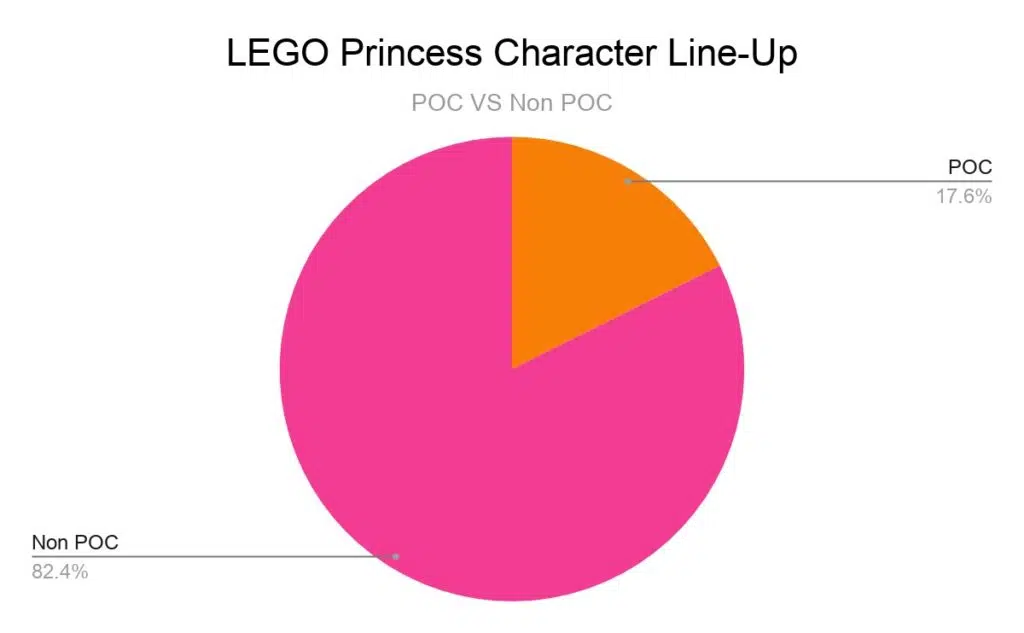
Similar to the sets, we also broke down the average selling prices of each minidoll and compared POC minidolls to non POC minidolls.
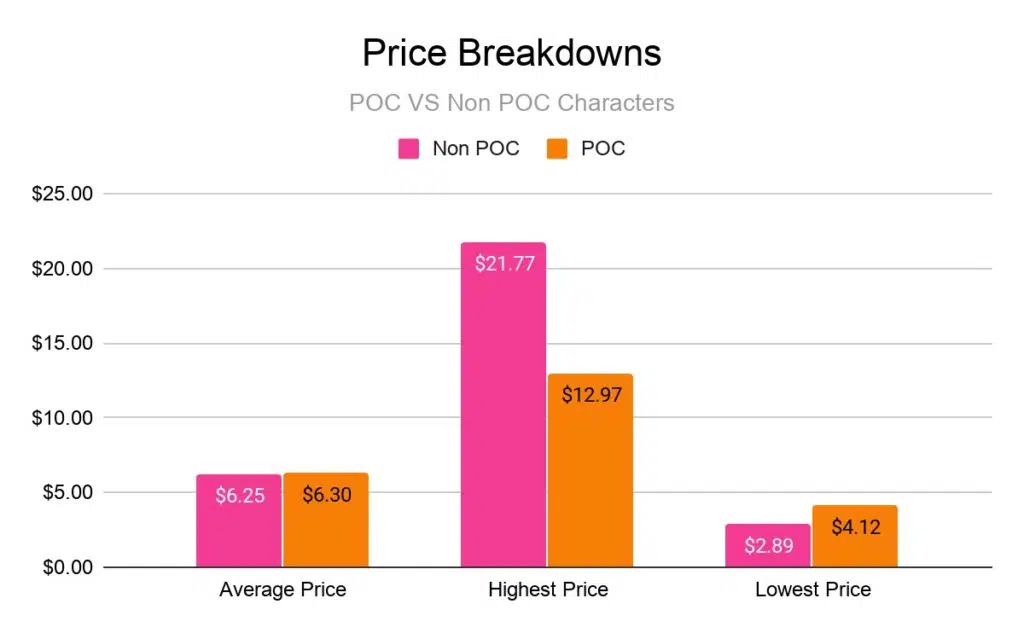
The most expensive Princess minidoll is Merida, at a whopping $21.77, while the most expensive POC princess minidoll is Tiana, at $12.97. Both of these characters were only released in one set and both sets were only on the market for one year. The least expensive non POC and POC dolls are Rapunzel and Jasmine, respectively.
The last thing WBI analyzed was the presence of skin-tone on these minidoll torsos. This is an expansion of an ongoing project by WBI to look at female minifigure torsos through a series of rating systems. You can read more about that project here For this project, we used the rating system for skin-tone only, which ranges from 0-3 or none to severe. None, or no skin is constituted by a torso that only has skin tone on the hands or no skin visible at all. A torso has slight skin tone presence when it has skin on a place other than the hands, usually the neck or upper chest. Moderate skin-tone means that the torso shows skin tone on two parts other than the hands, often the upper arms/shoulders and the neck or upper chest. Finally, a torso would fall under the severe category if skin was present on three or more places on the piece, such as the neck, chest, upper arms, or stomach.
Using this scale, we hoped to gain some insight on how sexualized LEGO may have made a female figure. LEGO has already gone under some fire for the way Minidolls are sculpted, particularly due to the two protruding bumps on the chest of female dolls. That being said, there are many ways LEGO can overly sexualize female characters without sculpting. For the Princess Minidolls, the rate of skin tone on the torsos were not particularly shocking.
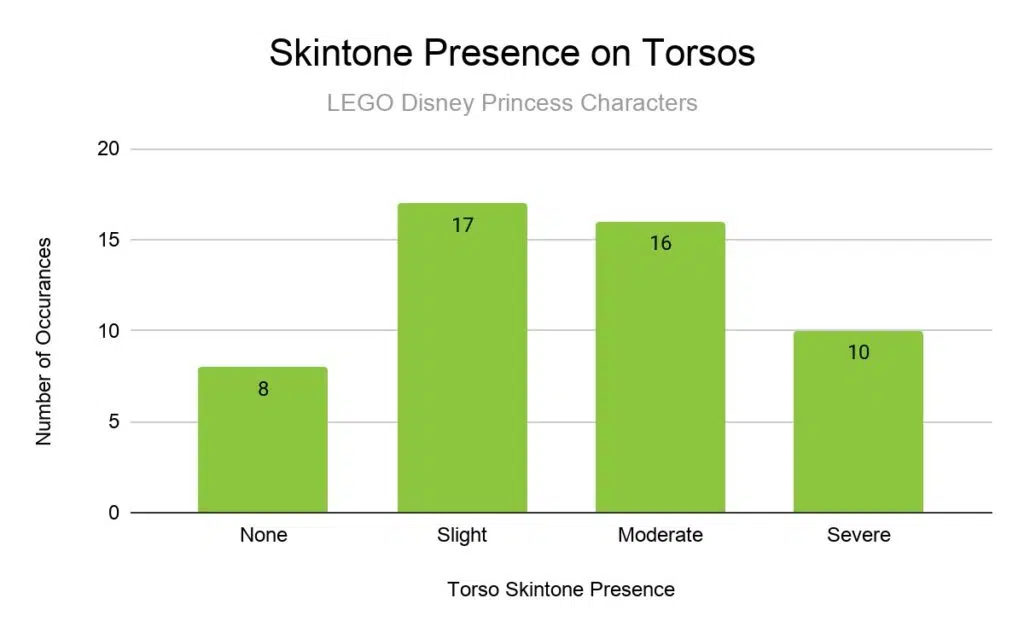
That being said, WBI wanted to dig a little deeper into these numbers, and proceeded to break these ratings into two categories, POC torsos and non POC torsos. For the non POC torsos, the percentage breakdown of each level was close to being split equally four ways.

However, when it came to POC character torsos, the results were much more skewed. Nearly fifty percent of all POC princess torsos were in the Severe category, and a third were in the Moderate category. This suggests an over sexualization of female Princesses of color in this subtheme, just due to the excessive amount of skin shown on their upper bodies.
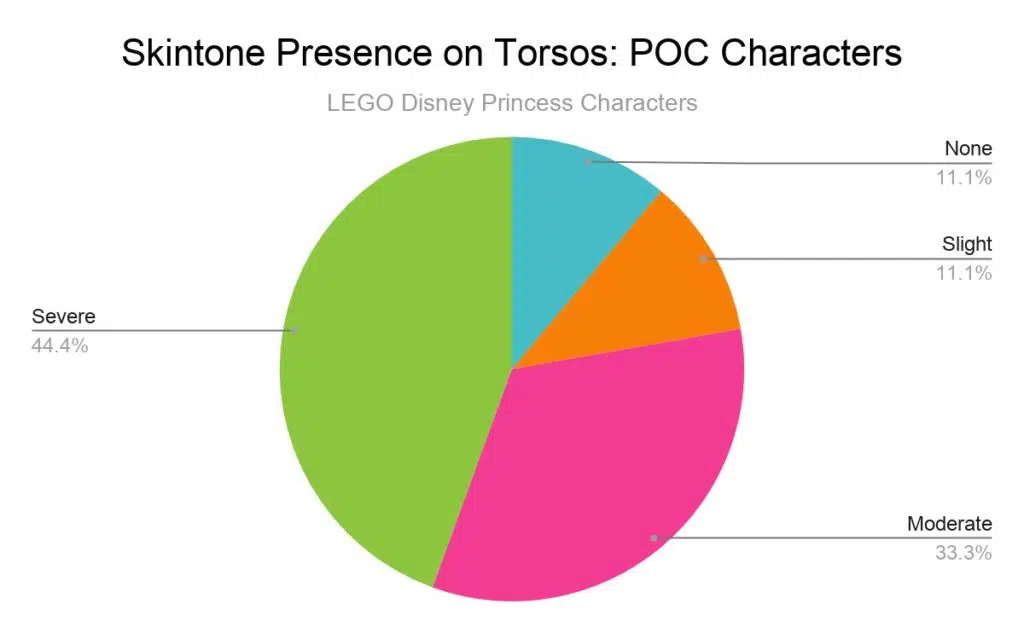
However, to cut LEGO some slack, I don’t think this originates with them. While Disney often draws white princesses to have beautiful, flowing, long sleeve ball gowns (think Belle or Aurora), princesses of color seem to wear a lot of sleeveless or off the shoulder outfits (like Moana, Jasmine, and Pocohontas). Really the only white princesses who shows as much skin as her POC peers is Ariel, and she spends most of her movie as a fully clothed human.
Conclusions
There are absolutely issues with the LEGO Disney Princess subtheme. The cost is embarrassingly high, the characters are not as diverse as they should be, and many of the Dolls are overly sexualized. However, after careful analysis, I do not think that many of these issues are entirely LEGOs fault. Do they prioritize white princesses over those of color? Yes, they do, and that is wrong. That being said, Disney’s lineup of official princesses is a fairly abysmal jumping off point. After nearly 100 years of releasing princess movies, they have only been able to portray four princesses of color – and some of those movies (like Mulan) have serious and sometimes racist mistakes woven into the story. Tiana, the only black princess, spends most of her movie as a frog!
Further, it seems entirely possible, based on my analysis, that the uptick in prices of these sets is due to Disney’s rather absurd and stringent copyright laws, and the fact LEGO may have only been provided these characters after paying Disney some exorbitant amount of money.
All this is to say that when it comes to portraying Disney princesses, LEGO does not have a lot of positivity to work with. However, this does not explain that LEGO has left out one of the few princesses of color, and that they have portrayed Mulan only in dresses, even though she spends most of the movie in a soldier’s uniform.
LEGO has recently declared their dedication to anti-racist efforts, and this area has a definite need for improvement. LEGO does have control over subtle shifts even from the limited way that Disney protrays characters, and should portray POC in a positive light.


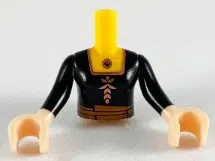
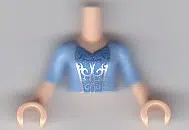
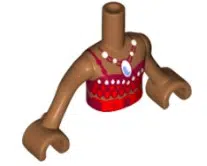
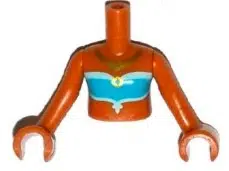
1 comment
Amariah
Love those sets so cool